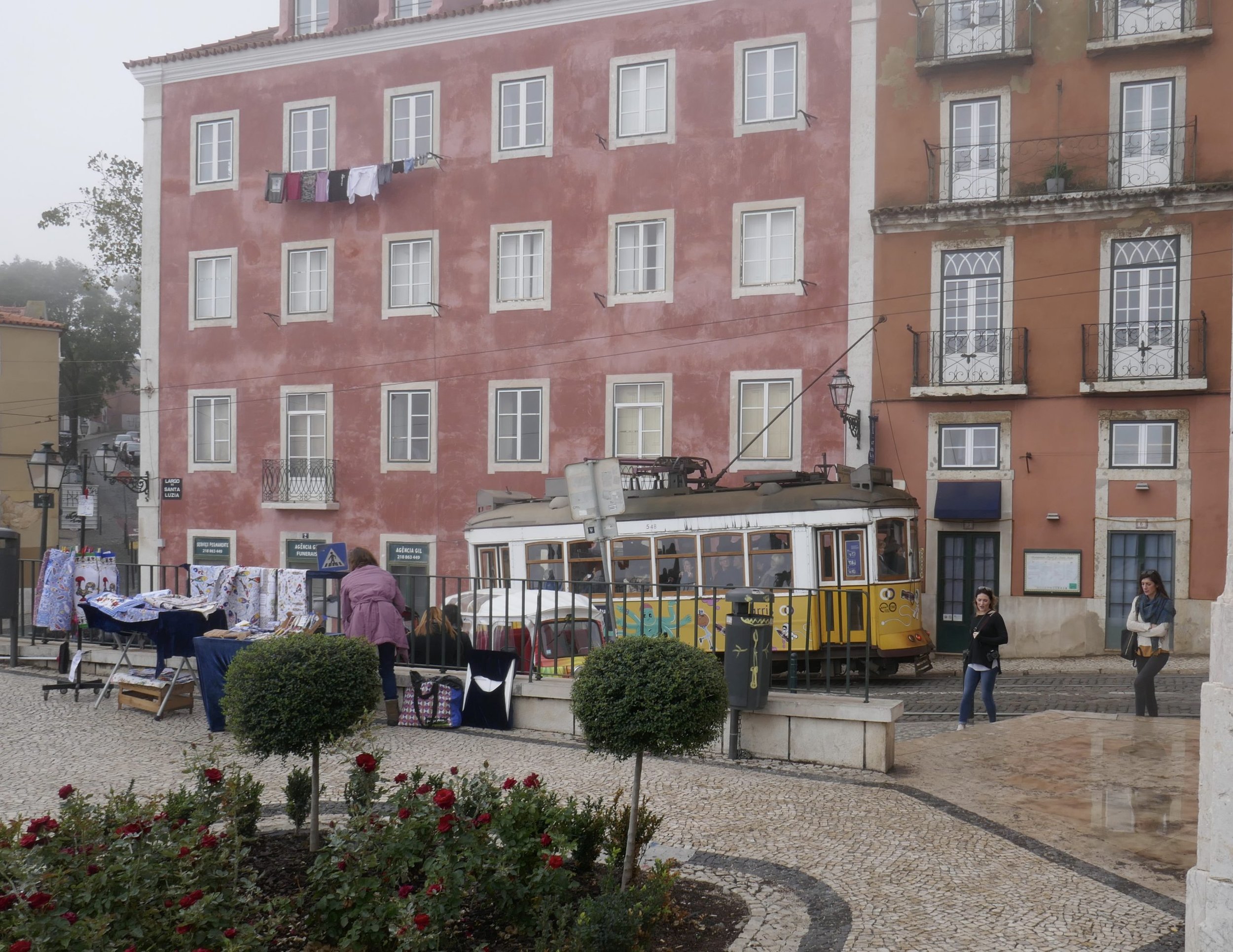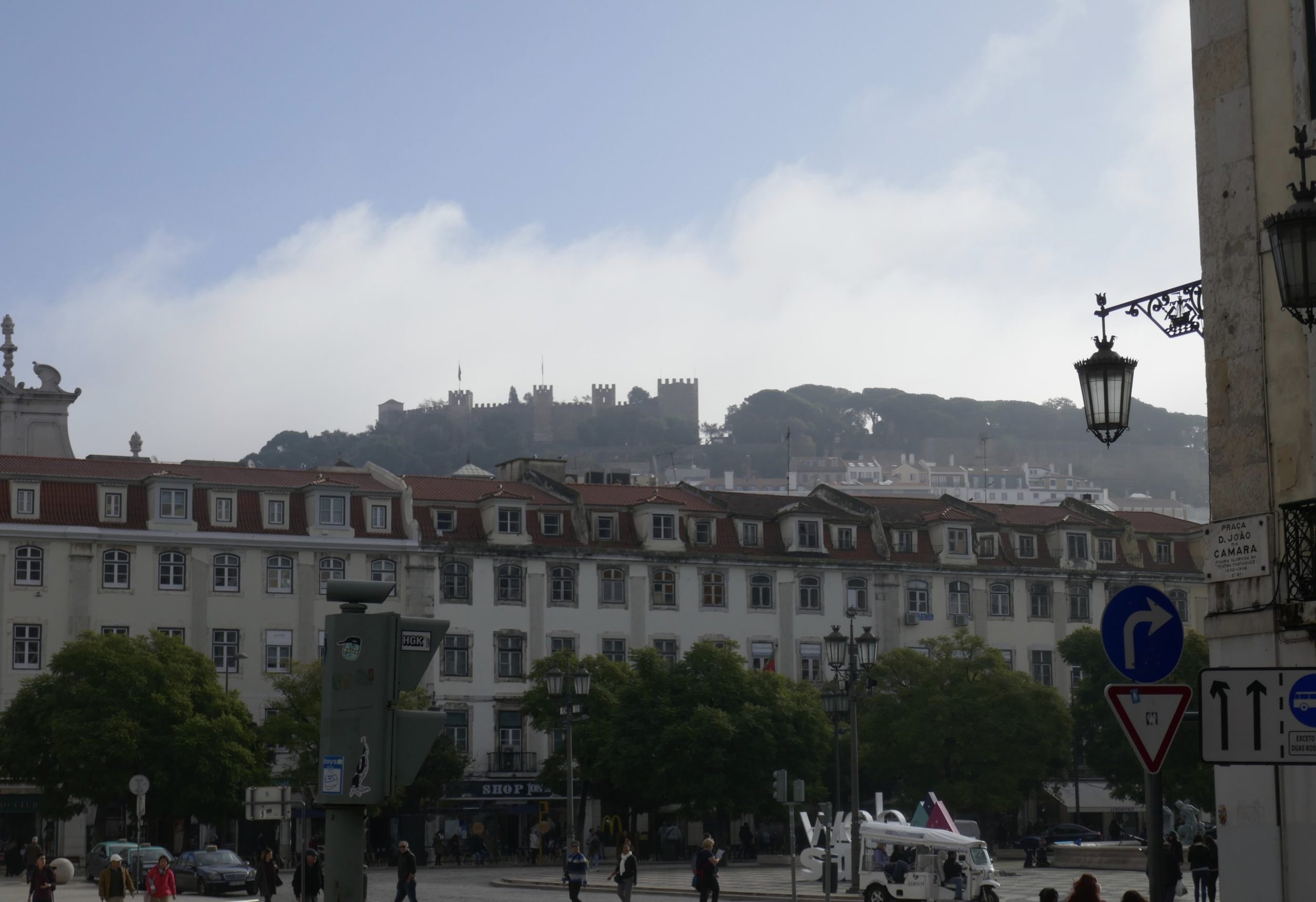Lisbon, Portugal
Bursting with history and faded charm, Lisbon was the perfect host for my recent visit.
Every corner I turned revealed something special...a colourful tram, beautiful tile work, laundry brightening a drab building, a view to the river, a castle...even in the rain and fog, it was charming.
I was a guest of Visit Portugal and TAP Air Portugal for a three-day tour around Lisbon and a one-day travel marketplace. Portugal has been voted "Europe's Leading destination 2018" by the World Travel Awards and it's easy to see why. The country’s history and culture, food and wines, beaches, surfing, golf and varied landscapes all create a great travel destination.The weather was mild in mid-November but unfortunately we had several days of rain. Lisbon's famous artistic limestone sidewalk designs, known as calçada portuguesa, are stunning...but slippery when wet!
Day one was spent exploring areas just north of Lisbon. Sintra was our first stop, the resort town in the foothills of Portugal’s Sintra Mountains and a designated Cultural Landscape World Heritage site by UNESCO. A longtime royal sanctuary, its forested terrain is studded with pastel-colored villas and palaces. The Sintra National Palace is distinguished by dramatic twin chimneys in the kitchen and elaborate tilework.
The rain prevented us from visiting the very instagrammable hilltop 19th-century Pena National Palace, known for its whimsical design and sweeping views. Despite the weather, there was still plenty to see and do in the town and we enjoyed a delicious lunch of grilled codfish at the Central Palace restaurant. Every meal in Portugal includes incredible local wines!
From Sintra, we visited Cabo da Roca, the western-most point of Europe,
and drove along the coast past the surfing beach Praia do Guincho to the charming town of Cascais with a marina and beautiful historic centre.
We headed south of the city on day two to the town of Setubal and the lively Livramento Market. The beautifully decorated market hall was filled with locals on a Sunday morning, buying fresh produce, cheeses, fish and enjoying local pastries & coffee.
Lunch was at the Sesimbra Hotel, another delicious meal of grilled swordfish and local cheeses, pastries…and wine!
And then off on a drive through the Arrabida Hills to see the view. Unfortunately, this was the second (and only other) rainy day so the vistas were shrouded in fog and mist.
On the third day, the sun came out for our walking tour of Lisbon. Our guide, Nuno Alegria of Secrets of Portugal was knowledgeable and patient as he led us through narrow alleys, up secret elevators to incredible views of the city,
and to castles, monuments and plazas.
We stopped at the Lisbon Jewish Memorial on the corner of Rossio Square, and learned about the Jewish Massacre of 1506.
Our walking tour in Lisbon ended with an amazing lunch at RIB, a restaurant on the corner of the Praca do Comercio (Commerce Square) and in the lobby of a beautifully restored hotel, Posada de Lisboa.
The iconic streetcars were jam-packed so I didn’t get to ride on one however the sunny yellow tram 28 made me smile as it rattled through the Alfama neighborhood.
Most cultures have a signature pastry and Portugal is no exception. I make it my mission to sample several of the favorite local sweets when I travel. I tried to limit myself to one a day, however it was difficult since they were even offered at breakfast! The pastel de nata is an egg custard tart, often dusted with cinnamon. Think creme brulee in a croissant tart shell!
The most famous pastel de nata is the Pasteis de Belem, made from a secret recipe passed on from the monastery in Belem that was next to a sugar cane refinery. In 1820, as a result of the liberal revolution, all convents and monasteries in Portugal were shut down. In an attempt to survive, the monastery started offering pastries for sale, they became known as Pasteis de Belem and have been drawing crowds ever since!
On my last afternoon in Lisbon I enjoyed a boat cruise on the Tagus River with Lisbon by Boat. The weather was perfect and it was an enjoyable way to spend a few hours and see Lisbon from the water.
The boat brought us up close to the Belem Tower, a
, built on the northern bank of the Tagus river between 1514 and 1520. Its original function was to defend the city, later becoming a lighthouse and customs office.
Right next to the Belem Tower is the impressive Monument to the Discoveries. The monument was built in 1960 on the 500th anniversary of the death of
who discovered the Azores, Madeira and Cape Verde. Leading the ship is Prince Henry and behind him are many Portuguese explorers.
Overlooking the city is the Christ the King monument and shrine. Inspired by the Christ the Redeemer statue in Brazil, it is an imposing statue. The giant cement statue was erected to express gratitude because the Portuguese were spared during World War II.
The boat cruise was timed to end just as the sun was setting. We passed under the
, a suspension bridge spanning the Tagus River. Originally called the Salazar Bridge, the name was changed in 1974 because the authoritarian regime was overthrown on the 25th of April, which is now a national holiday in Portugal, known as Freedom Day.
I left Portugal with a long list of places I still want to visit and things I want to do. I'll be back and if you have any interest in visiting Portugal, let me know! I'd be happy to help you plan a trip to this incredibly diverse country.
LogoVisitPortugal_Principal_Cores_Pos_PNG






























